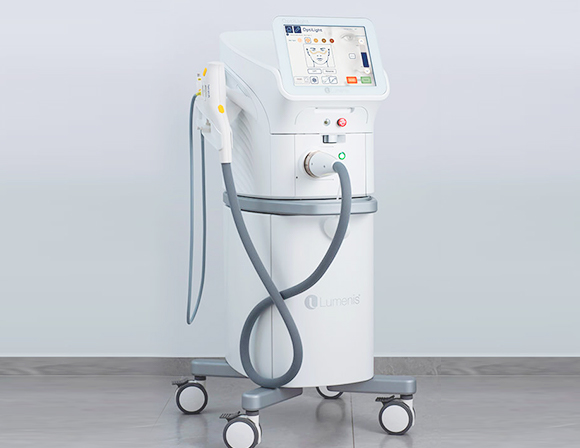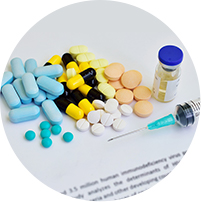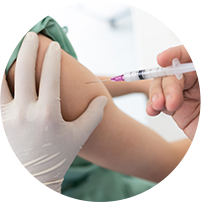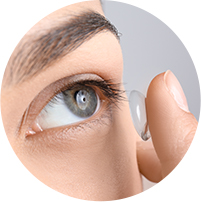
眼睛乾澀

容易疲倦
眼皮緊繃

眼癢、
有異物感

眼痛、
有灼熱感

眼睛分泌物、
黏稠

眼睛會出現
紅腫、充血

怕風、畏光、
對外在刺激很敏感

嚴重者會角膜破皮
視力模糊
乾眼症成因主要由於淚液分泌不足、蒸發過快或品質異常等,以導致影響眼睛表面的濕潤度和保護功能。
淚液層是指覆蓋在眼球表面的液體薄膜,是由三層結構組成:最外層的油脂層、中間的水液層和最內層的黏液層. 它們分別對維持眼球表面的濕潤、光學性能和保護眼球起重要作用。


由眼瞼的皮脂腺所分泌,在最外層,主要功用是增加淚膜表面張力,延緩水液層的蒸發,使眼瞼及眼球表面濕潤。

由淚腺所分泌,在中間層,使眼睛的表面濕潤、提供角膜氧氣、有殺菌及清除代謝物的作用。

由結膜的杯狀細胞所產生,在最內層,使水液層能均勻分佈在結膜表面,減少貶眼時產生的摩擦。
淚膜中若有一層分泌不足或分佈不均勻,均可能造成「乾眼症」。

由於眼瞼疾病造成眼瞼皮脂腺功能不良

年齡增長,淚腺功能下降
先天性無淚腺
自體免疫疾病
長時間配戴隱形眼鏡
長期使用某些眼藥水或藥物
荷爾蒙影響(如︰更年期婦女)
某些全身性疾病(如:乾燥綜合症)

缺乏維他命A、慢性結膜炎等

眼瞼疾病造成眼瞼閉合不良
長期處於乾燥的環境
眨眼次數減少(長時間注視電子螢幕而減少眨眼次數)

乾眼症一般可分為缺水型、缺油型及混合型(缺水及缺油型) 3大類

若淚腺受到破壞、功能退化或異常,淚水分泌會減少。當人年紀增長以致淚腺退化;或女士進入更年期後荷爾蒙改變;或有自體免疫性疾病;這些情況都可能引致淚水分泌不足,造成「缺水型」乾眼症。

瞼板腺的開口在上下睫毛根部附近,主要的功能為分泌脂質層,健康的脂質層可減緩淚膜水液層的揮發。當淚液缺少脂質層,水分會快速蒸發,造成「瞼板腺功能障礙」。

臨床上,多數患者屬於混合型乾眼症,即是淚水分泌不足(缺水)及淚液蒸發太快(缺油)兩者症狀並存。

長時間配戴隱形眼鏡人士

長時間注視電子螢幕人士

長期服用藥物,
如︰血管收縮劑、抗抑鬱藥、
安眠藥、降血壓藥

長時間處於乾燥環境,
如︰有冷氣或暖氣的室內地方、
陽光下曝曬

免疫系統疾病患者,
如︰關節炎、糖尿病、
甲狀腺疾病等

更年期婦女﹙約45歲以上﹚
眼科專科醫生會先了解患者病徵和生活習慣,再根據臨床檢查診斷乾眼症,包括︰檢查角膜表面有
沒有傷口、眼皮是否清潔、瞼板腺是否暢通等。透過眼睛檢查,以判斷乾眼症的嚴重程度。
眼科專科醫生會先了解患者病徵和生活習慣,再根據臨床檢查診斷乾眼症,包括︰檢查角膜表面有沒有傷口、眼皮是否清潔、瞼板腺是否暢通等。透過眼睛檢查,以判斷乾眼症的嚴重程度。
▼乾眼症等級分4級,最嚴重可影響視力
| 級別 | 第一級 | 第二級 | 第三級 | 第四級 |
| 程度 | 輕微 | 中度 | 嚴重 | 非常嚴重 |
| 頻率 | 偶爾不適 | 較常不適 | 經常並持續 感到不適 |
嚴重不適, 持續不減 |
進行試紙測試時,首先會在應診者的眼睛滴入表面麻醉的眼藥水,數分鐘後將淚液分泌試紙放在眼角內側,閉上眼5分鐘,讓濾紙吸收淚水,取出濾紙後量度淚水弄濕濾紙的長度。
如果試紙淚水長度少於或等於5毫米,很可能已經患上乾眼症,屆時醫生會應用其他檢查(例如:角膜染色檢查等)來判斷病人是否存在乾眼。一般來說,若淚水長度少於5毫米,而且角膜染色檢查(+),應診者則多已患上乾眼症。
此測試是用作分析淚液功能穩定性,醫生會使用裂隙燈及螢光染色,在應診者眼睛的表面點上螢光素,把淚膜染色去觀察淚膜的破裂時間。若淚膜在5秒內破裂,很大機會患上乾眼症。

乾眼症治療的主要目的是減輕乾眼症狀,增加眼球表面的淚液,增加淚水分泌和減少淚水蒸發。乾眼症
是慢性疾病,需長期接受治療,並需要患者配合去改變生活習慣。
乾眼症治療的主要目的是減輕乾眼症狀,增加眼球表面的淚液,增加淚水分泌和減少淚水蒸發。乾眼症是慢性疾病,需長期接受治療,並需要患者配合去改變生活習慣。
Lumenis OptiLight已獲美國食品及藥物管理局(FDA)批准使用。此技術安全有效地治療眼瞼腺體發炎相關的乾眼症,每次治療時間大約需要數分鐘,在門診即可完成。
Lumenis Lumenis OptiLight治療是以強力脈衝光(IPL)為基礎,利用儀器於患者眼睛周圍發放IPL幫助疏通堵塞的瞼板腺,令油脂分泌回復正常,減少淚水蒸發。適合紓緩中度至重度乾眼症症狀,以及改善因瞼板腺功能障礙(MGD)患者存在的眼乾問題。
Lumenis獲得專利的技術OPT™,治療可提供有針對性、均勻、精確和可控的技術,同時控制炎症過程,並改善由瞼板腺功能障礙(MGD)引起的乾眼症的問題。一般情況,治療能達到以下的功效︰



乾眼症是慢性病,有機會需要3至4次治療才見效。在接受治療前、期間和之後,患者應該根據眼科專科醫生的建議護理。
應用人工淚液(盡量使用不含防腐劑的人工淚液),嚴重者可能需要使用自體血清。
乾眼症治療除了針對病因治療外,使用人工淚液也是有效的方法。隨著藥物學不斷發展,人工淚液不斷改良。現時有不少新藥物用於治療乾眼症,針對淚膜三層結構來進行治療,大大提高了乾眼症藥物的治療療效。
使用人工淚水也有需要注意的細節。市面上,大部分眼藥水為了方便長時間保存,均有添加防腐劑。正常情況下,使用含有防腐劑的眼藥水多數不會對人體造成影響。不過,乾眼症患者的眼睛對防腐劑的耐受性可能較低,因此比較適合使用不含防腐劑的人工淚液,以避免長期接觸防腐劑導致眼睛敏感等問題。人工淚液可分為眼藥水及眼藥膏:
使用方便、簡單,可在眼球乾澀時直接補充水分,但水分蒸發較快,症狀嚴重的話需要頻密使用。
藥膏狀的人工淚液黏貼度較高,可留存在眼內更長的時間,以保持眼睛濕潤,但因太黏,往往會造成短暫的視力模糊,所以一般建議在眼睛休息時(如睡前)使用。
使用淚道塞子堵塞淚道開口,從而減少淚液流失,病情嚴重者可考慮永久封閉淚道開口。
鞏膜鏡是一款高透氣的特製隱形眼鏡,覆蓋眼角膜和角膜周圍的表面,有助淚水停留眼表,滋潤角膜表面。

盡量避免服用減少淚液分泌的藥物,如:降血壓藥、抗抑鬱藥、阿托品類似物等。

因免疫因素而引起的乾眼問題,可加用免疫抑制劑或短期局部使用激素。

減少配戴隱形眼鏡的時間。

多喝水來補充身體水份。

多吃護眼蔬果來補充營養所需,可食用含豐富維他命A的食物,如:牛奶、雞蛋,也可食用含豐富胡蘿蔔素的蔬菜。
預防乾眼症可從改變生活習慣、調整環境和飲食著手,以下6種方法有助預防乾眼症
不要把風扇、暖氣、冷氣吹出來的風直接往眼睛吹,以免雙眼水分抽走。
看書本或電子螢幕20分鐘,建議雙眼休息20秒或者遠望20呎﹙約50厘米﹚外的景觀,以紓緩眼乾不適。
每數分鐘就要閉上雙眼休息一下,或者眨眼數下,讓淚液更平均分佈在眼球上, 維持淚膜正常狀態。
乾眼症患者的角膜比較容易受損,因此要注意配戴隱形眼鏡的時間, 以免乾眼症惡化。
含有維他命A、C、E,Omega-3或葉黃素的食物,適宜多吃, 以保持雙眼健康和促進淚液分泌。
早晚使用熱毛巾、熱敷袋、熱敷眼罩熱敷眼睛15分鐘,以保持眼晴濕潤, 不過要留意溫度應維持在40°C,避免灼傷。
 讓眼睛有充分休息
讓眼睛有充分休息